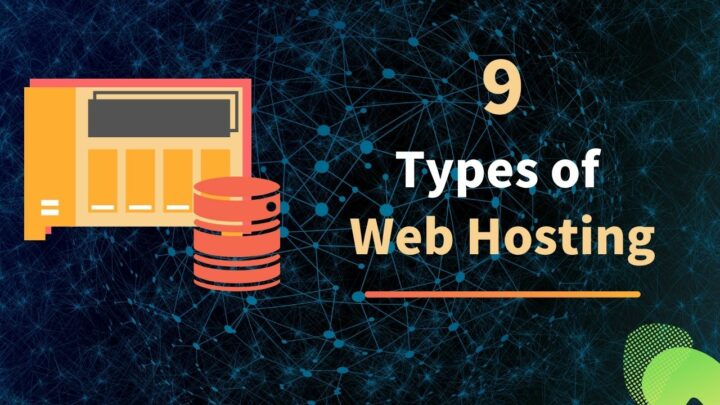This article may contain affiliate links. If you buy some products using those links, I may receive monetary benefits. See affiliate disclosure here
If you are looking for an alternative to Amazon S3, then this post can help you in finding out one. While it is a great solution for a variety of uses like media storage, backups, and file sharing, S3 may not be the right choice for all.
Why you might want to switch to another provider?
Maybe you are looking for some features that are not available on Amazon’s platform. Or maybe you are a small user and S3 is an overkill for you. The reasons to switch can be different based on your requirements.
So, in this list, we will discuss all types of providers, small scale, and enterprise. The only criteria I checked while picking the items are, whether it’s object storage or not. Note that there is no strict order in which I have sorted the list although I have tried to include the cheaper ones at the top.
If you are looking for a general cloud storage provider for syncing and file storage, then you might also want to check:
With that, let us start.
1. Linode Object Storage
If you are a developer, you might know Linode as a cloud VPS provider. They have been in operation since 2003. However, they released their Object Storage Solution only in October 2019.
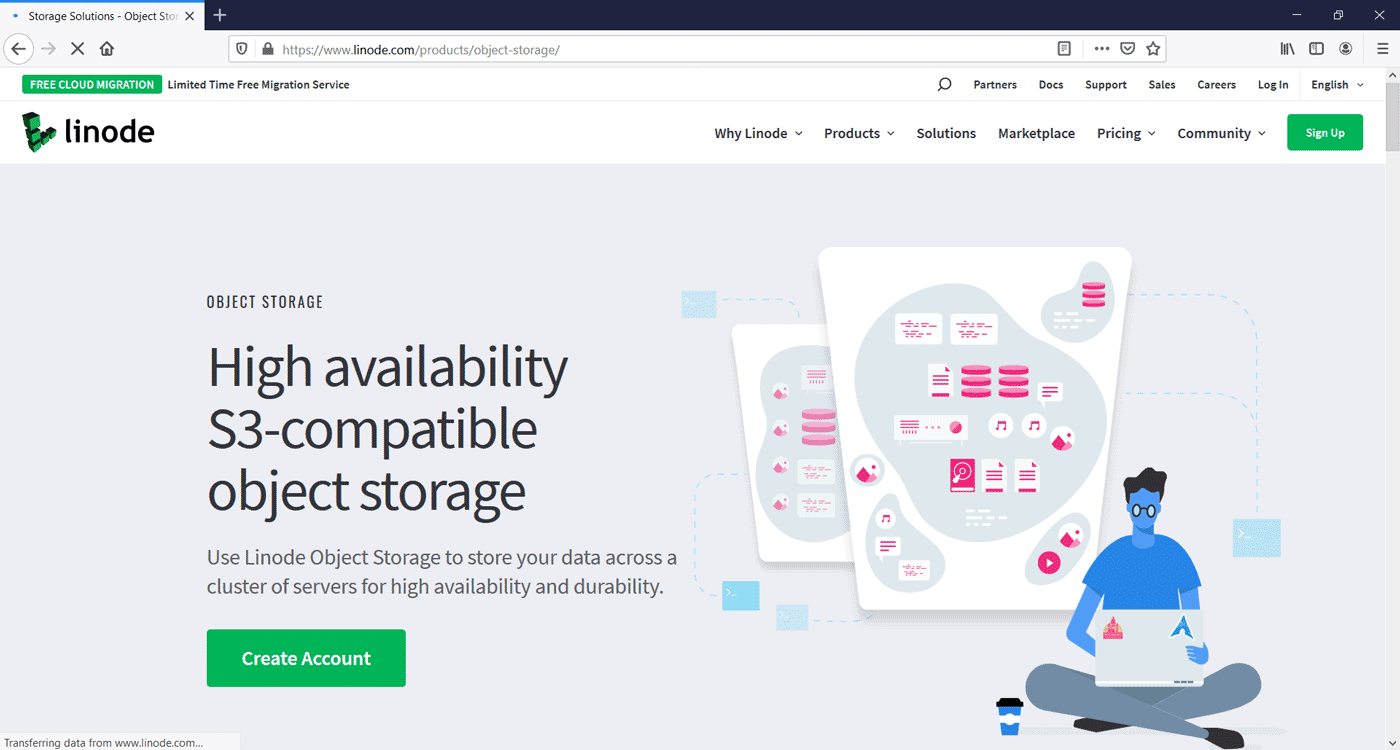
Linode has a total of ten locations around the globe. They have a great presence in the Asia-Pacific region, with data centers in Mumbai, Tokyo, and Sydney. However, object storage is currently available in Newark, Frankfurt, and Singapore only. As per their infrastructure page, it’s coming soon to other locations as well.
The price for Linode Storage is $5/mo, which includes 250GB of storage and 1TB of outbound transfer (downloads). API requests are free. If you cancel the plan after half a month, the charge will be pro-rated.
-
Protocol: S3
-
Locations: 3 (one each in North America, Europe, and Asia-pacific)
-
Price: $5/mo for 250GB + 1TB outbound transfer
-
CDN: no
2. DigitalOcean Spaces
DigitalOcean is a cloud provider that gets a lot of praise from developers. Although it lacks some features compared to AWS, it is a lot easier to integrate owing to its simplicity.
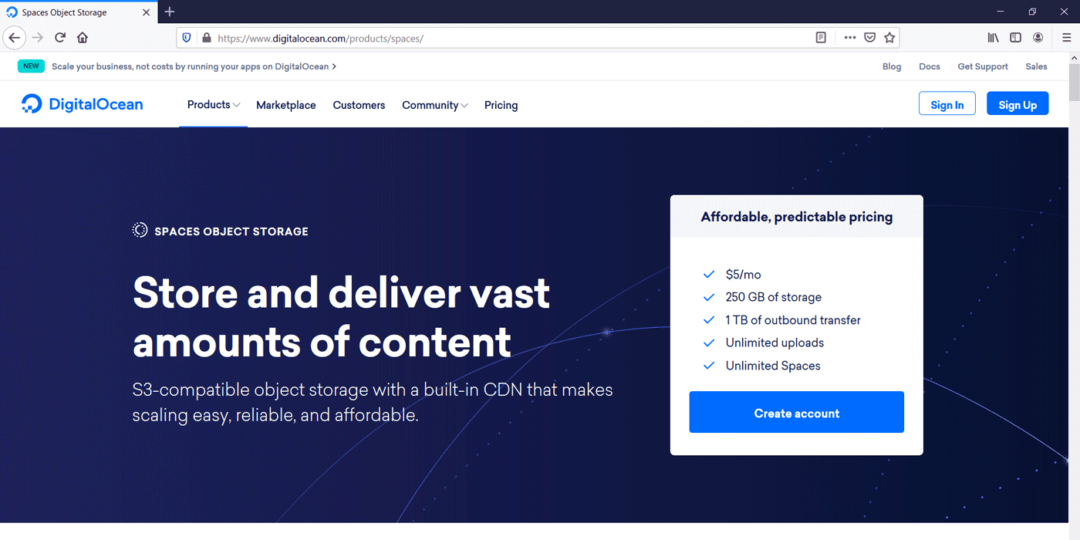
‘Spaces‘ is DigitalOcean’s object storage solution. Just like Linode, Spaces also imposes a minimum monthly charge of $5. But still, in the long run, the cost of storage is much lower than S3 since there are no additional charges for reads, writes, or other API operations. You need to pay only for the storage. I have included a pricing comparison in my Spaces review. Please check it out as well.
Currently, DigitalOcean allows storage in five locations:
- San Francisco
- New York
- Amsterdam
- Frankfurt
- Singapore
Although they have presences in India (Bangalore), Canada (Toronto), and the UK (London) also, Spaces is not available in these locations.
On the plus side, Spaces has a built-in CDN feature. So, if you want to serve static assets for websites, the CDN is a great way to reduce latency.
-
Protocol: S3
-
Locations: 5
-
CDN: yes
-
Price: $5/mo for 250GB & 1TB bandwidth
3. Cloudflare R2
Cloudflare's S3-compatible object storage solution - R2 - came out in 2021. If you ask me, the main highlight is its pricing.
Cloudflare R2 offers a forever free plan that gives 10GB of storage per month, 1 million Class A operations, and 10 million Class B operations. Class A operations are those operations that modify the data, like the PUT operation, while Class B involves reading objects, like the GET operation.
There is no egress charges either. So, for most small to medium uses, R2's free plan will be more than sufficient. But for large users, costs can be comparable to S3's.
When you activate the R2 subscription from the Cloudflare dashboard, you will be asked to connect a payment method. PayPal is also supported. But it won't cost anything until you cross the free limits.
Once you cross the free limits, R2 costs $0.015/GB for storage, $4.50/million for Class A operations, and $0.36/million for Class B operations.
As you can read here, some users may be able to save upto 99% by using R2 over S3, while for some others, S3 may be more economical.
Also, when you create a new R2 bucket, Cloudflare can automatically select a location for you. Nevertheless, you can also choose from one of these locations:
- Asia-Pacific
- Eastern Europe
- Eastern North America
- Oceania
- Western Europe
- Western North America
4. DreamObjects
DreamObjects is an object storage solution from Dreamhost, a popular web hosting company known for providing WordPress web hosting. As a company that backs open-source projects, they are using the open-source Ceph software to power DreamObjects.
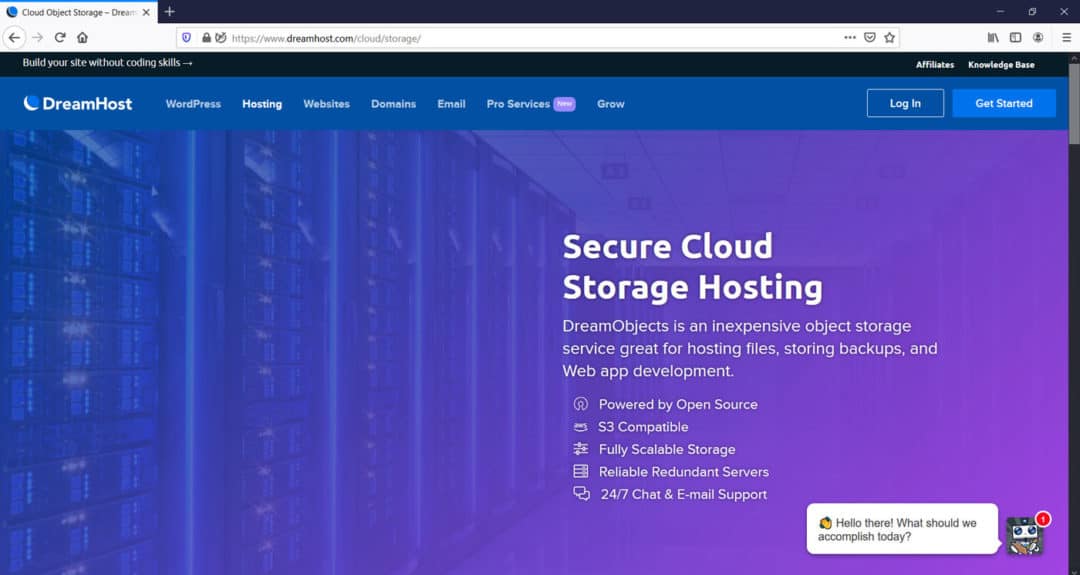
Like most of the other providers on this list, DreamObjects too is compatible with S3 API. However, not all features are supported. For example, it supports Access Control Levels (ACLs) but does not fully support bucket policies [according to this support article].
The price is much cheaper than Amazon S3. The storage cost is $0.025/GB/mo for storage while the cost for downloads is $0.05/GB/mo. Dreamhost also gives a free 30-day trial for DreamObjects. You can manage your buckets and access keys right from the Dreamhost control panel – the same place where you manage your hosting accounts.
According to their website, the data center for the object storage service is located in Irvine, California.
Overall, DreamObjects may not have a lot of features but it is an affordable solution for website backups and media storage.
-
Protocol: S3
-
Locations: 1 (California, USA)
-
Price: $0.025/GB/mo (storage), $0.05/GB downloads/mo
-
CDN availabiltiy: no
-
See also: Dreamhost Review
5. Wasabi
Founded in 2017, Wasabi is a relatively new player in the field of storage providers. Unlike the above companies who also offer cloud servers, Wasabi’s sole focus is on providing storage.
They advertise themselves as 80% cheaper than Amazon S3. Not just cheaper, the pricing structure is a lot simpler too. There are no complicated tiers either. However, there are a few caveats, which I had discussed in detail in my Wasabi review.
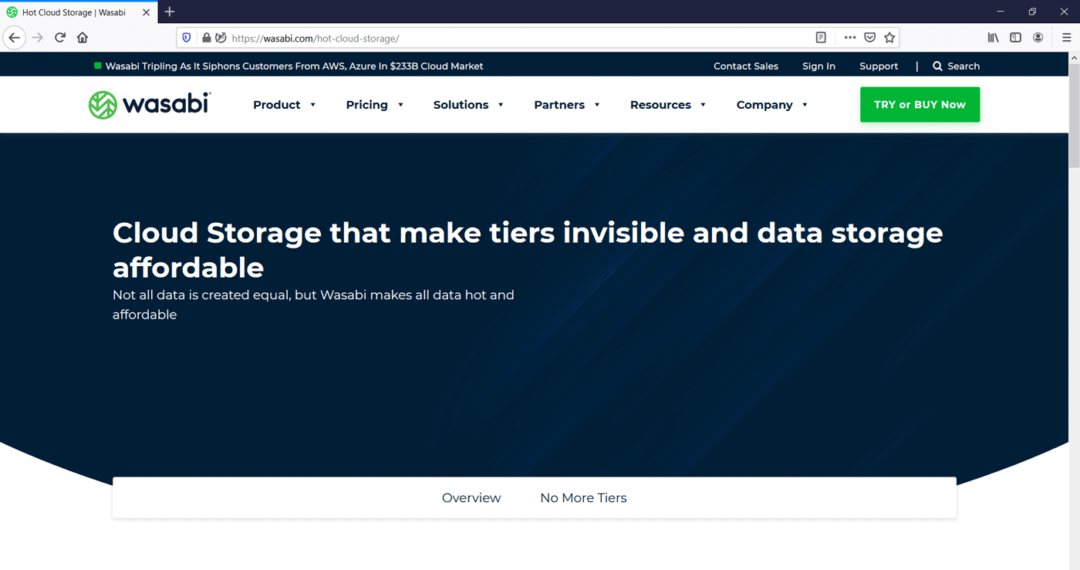
To show you how to set up Wasabi buckets, policies, and users, I have created a video:
Since egress and requests are free, you don’t have to fear unexpected bill amounts. However, there is a minimum monthly charge of $5.99, even if you don’t store anything with them for a month.
Currently, Wasabi Hot Storage offers four regions – US East, US West, Europe, and Asia (Tokyo).
-
Protocol: S3
-
Locations: 4
-
Storage Price: $0.0059/GB/mo, minimum monthly price: $5.99
-
Egress and API requests are free
6. Vultr Object Storage
These days, most cloud providers offer their own object storage solutions in addition to their VPS instances. Launched in August 2019, Vultr is a new player in this field. They released their Object Storage service just two months before Linode launched their service.
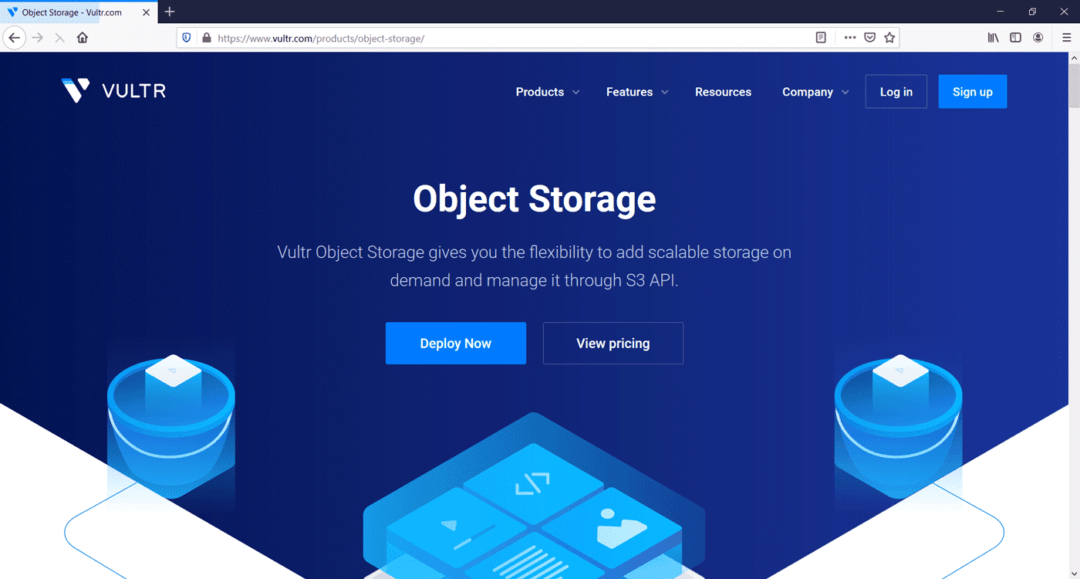
Pricing and feature-wise, Vultr’s S3-compatible Object Storage is quite similar to DigitalOcean Spaces. With just $5/mo for a bucket with 250GB storage and 1000GB bandwidth, Vultr is as cheap as Spaces. There is no charge for reads, writes, or API requests.
Overall, Vultr has 17 locations worldwide. However, for Object Storage, New Jersey (U.S) is currently the only available location. Hopefully, they will offer it in other locations too in the not-so-distant future.
-
Protocol: S3
-
Locations: 1 (New Jersey)
-
Price: $5/mo (25GB storage + 1000GB bandwidth)
-
CDN: no
7. Backblaze B2
Founded in 2007, Backblaze B2 is one of the cheapest object storage providers available today. Advertising itself as 1/4th the price of Amazon S3, the price for B2 is $0.005/GB/mo for storage and $0.01/GB for downloads. The first 10 GB is free too.
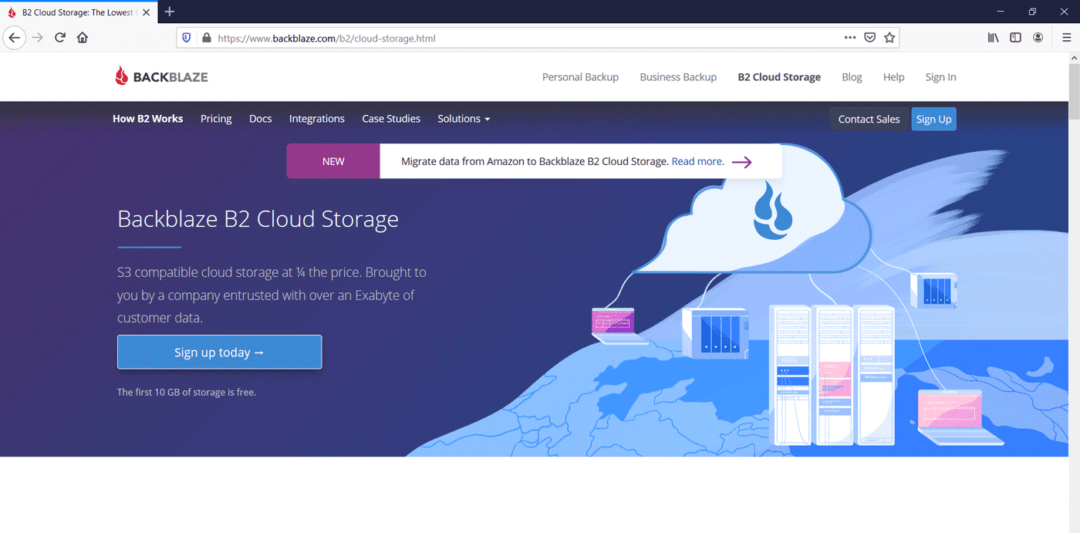
Unlike other providers like Wasabi or DigitalOcean Spaces (see below), Backblaze B2 has no minimum monthly charges.
Apart from being cheaper, there is another reason I like B2:
- It allows keys with limited permission (write-only or read-only), which you can set easily using the B2 protocol.
You can create multiple access keys with different permissions. It’s highly useful for making secure website backups.
B2 Dashboard is also quite simple to use. You can easily create buckets and access keys without fiddling through numerous menus. There is also a CLI if you want to manage it from the command line.
B2 vs Backups
There is one thing to note about Backblaze. Don’t confuse Backblaze Backups with Backblaze B2. The former is a syncing tool that backups your devices to the cloud while the latter is the object storage we’re talking about.
I pointed out it because people are often confused between the two. The backup tool stores your files only for 30 days if you are offline. In contrast, B2 is for archiving and permanent storage. The files won’t be deleted even if you are offline.
-
Protocol: B2, S3
-
Locations: 4, but cannot choose
-
Price: $0.005/GB/mo for storage, $0.01/GB for downloads
8. Azure Blob Storage
All the items we mentioned above were a lot simpler in structure than Amazon S3. But, Microsoft’s Azure Blob Storage is quite similar to S3 in terms of complexity, be it in pricing or tiers. Just like AWS, Azure is an enterprise-level provider, which may not suit small users.
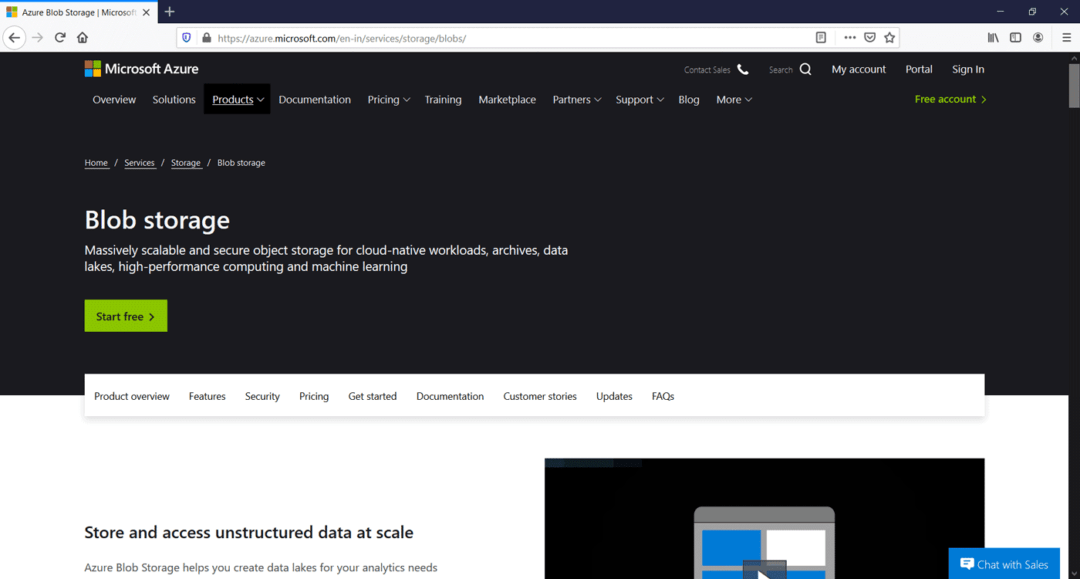
There are a couple of parameters you should keep in mind while picking an Azure Blob plan:
- Performance tier
- Access tier
- Redundancy
- Account type
Like S3’s tier structure, Azure also offers three main classes for storage:
- Hot
- Cold
- Archive
The Hot tier is suitable for frequently accessed data. So, it has a lower access cost and a higher storage cost. In contrast, the Archive is suitable for data that is least accessed. Cold stands somewhere in between. Take a look at this pricing calculator:

price for Hot tier – 1000GB storage, 100k write, 100k read

price for Archive tier – 1000GB storage, 100k write, 100k read
Look at the difference in monthly costs for the same thing when the tier changes. That’s not all, there are a lot more factors. However, discussing all of them is out of the scope of this post. In short, choose your tiers wisely to avoid surprisingly huge monthly bills.
9. Google Cloud Storage
If you know about AWS, you might have heard about Google Cloud Platform as well. It’s another enterprise-level cloud provider, which is in the same league as Amazon AWS and Microsoft Azure.
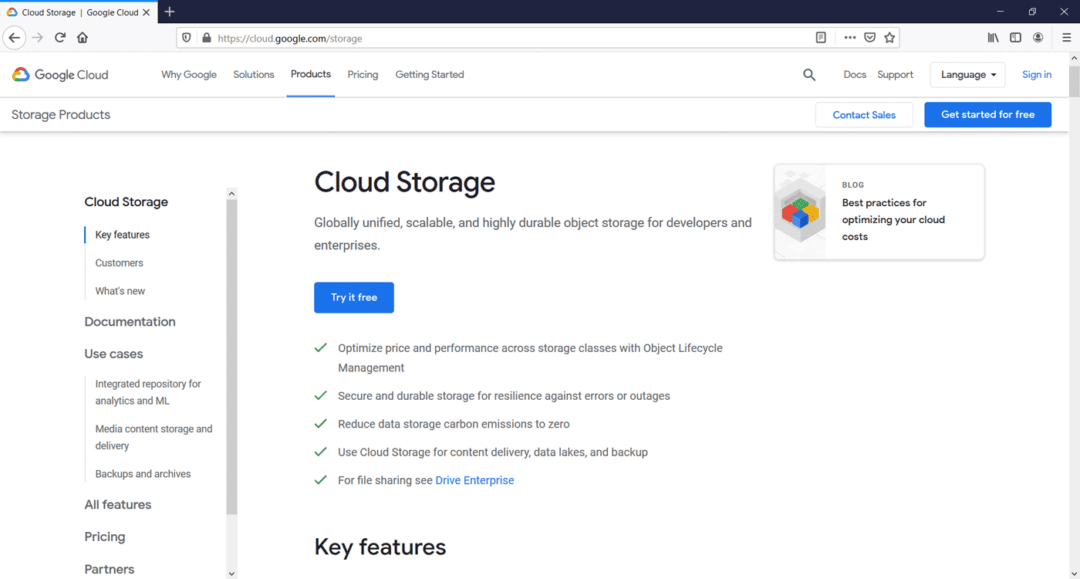
With around 24 regions and over 140 locations, Google Cloud has made its presence everywhere. So, not just for object storage, GCP is a complete alternative to AWS.
With that, let us check its storage options. Like the Azure Storage we discussed above, GC has four tiers suitable for different usage patterns:
- Standard
- Nearline
- Coldline
- Archive
Standard is the one you should select if you want to access your objects frequently (equivalent to the Hot class in Azure). There is no minimum storage duration for that. Archive, on the other hand, has a minimum storage duration of 365 days. Early deletion can cost extra.
The pricing for Google Cloud Storage is based on the following factors:
- Storage: lowest price for the Standard tier is $0.02/GB
- Network: upto 1TB, the lowest data egress price is $0.12/GB (from GCP to other destinations)
- Operations: there are two types of Operations, Class A and Class B. For example, write (add objects) operations are included in Class A, while reads (get objects) are Class B.
There are a lot more factors considered during the price calculation. The above list is just to give you an idea that Google charges for bandwidth and operations as well, not just for storage.
There is also a monthly free limit, which allows 5GB storage, 5k class A operations, 50k class B operations, and 1GB egress. This free limit is great for testing out the platform.
10. Rackspace Cloud Files
Founded in 2008, Rackspace is one of the earliest cloud computing providers, along with Amazon and Google Cloud. And Cloud Files is the name of their object storage solution. With over 35 locations worldwide, their choice of data centers is also great.
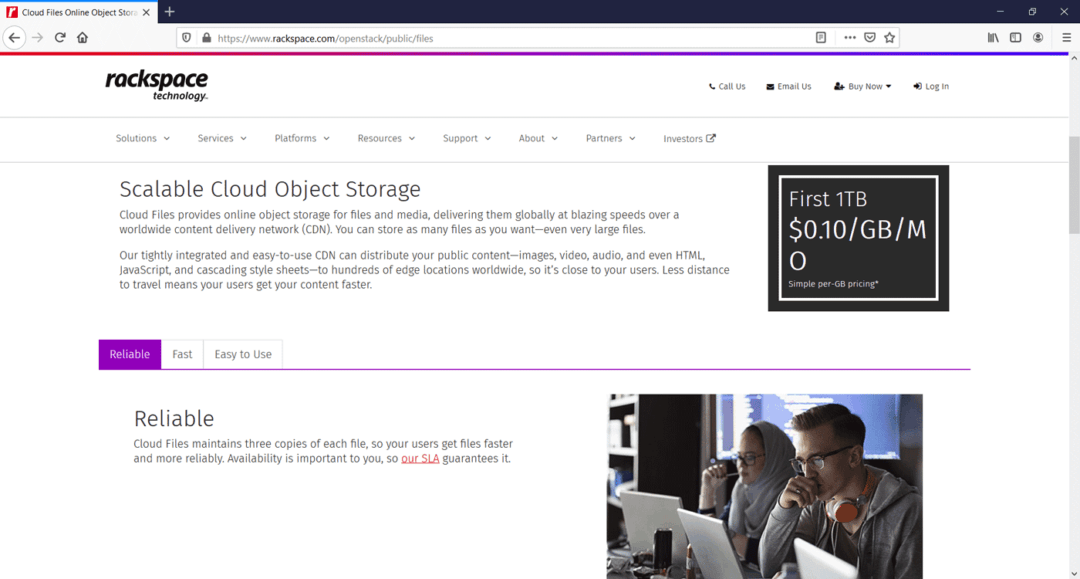
However, one thing that might worry you is their price. The starting price for storage is a whopping $0.10/GB (that is, $100 for 1TB), in addition to the CDN bandwidth charge, which is $0.12/GB. The incoming bandwidth is free though. But still, it is almost five times the storage price of S3. According to a review, there is no justification for such a huge price in this era.
On the plus side, the infrastructure provided by Rackspace is top-notch. The built-in CDN is powered by Akamai, one of the leading content delivery network providers. So, your users will receive your content from one of Akamai’s edge locations closer to them.
11. IBM Cloud Object Storage
Last on this list is IBM, another enterprise-grade cloud provider. Well-known brands like Zenfolio and Bitly use their Cloud Object Storage service to serve their customers.
According to some user reviews, IBM’s platform is slightly more difficult to use than S3’s (I haven’t tried it personally). So, if you are a small-scale user, it may not be the right choice.
There are mainly six storage classes for you to choose from:
- Smart
- Standard
- Vault
- Cold Vault
- Archive
- Accelerated Archive
Among these classes, the Smart tier is somewhat flexible. That means, if you have varying usage patterns, the Smart tier adjusts the cost accordingly.
Although currently sold under the brand IBM, this object storage service was not initially their venture. Instead, in around 2015, IBM acquired a company named Cleversafe, a storage service provider, and included it as a part of their services.
Conclusion
I cannot pick a winner from the above list. Because, as I had said in the opening paragraphs, the storage needs are different. But, I will divide them into three categories based on my understandings.
- Personal users: Backblaze B2, Dreamobjects, Wasabi
- Developers/small-to-medium users: DigitalOcean Spaces, Linode Storage, Vultr Storage
- Large users/enterprises: Google Cloud Storage, IBM, Rackspace, Azure, Cloudflare R2
For a person looking for just personal or website backups, B2, Dreamobjects, or Wasabi can be a great choice.
Instead, if you are a developer who wants VPS as well, but still prefers simplicity, consider, DigitalOcean, Linode, or Vultr. And lastly, for teams who want a complete cloud ecosystem, pick one of the enterprise-grade solutions.
Have you used any of these object storage services? Share your thoughts below.

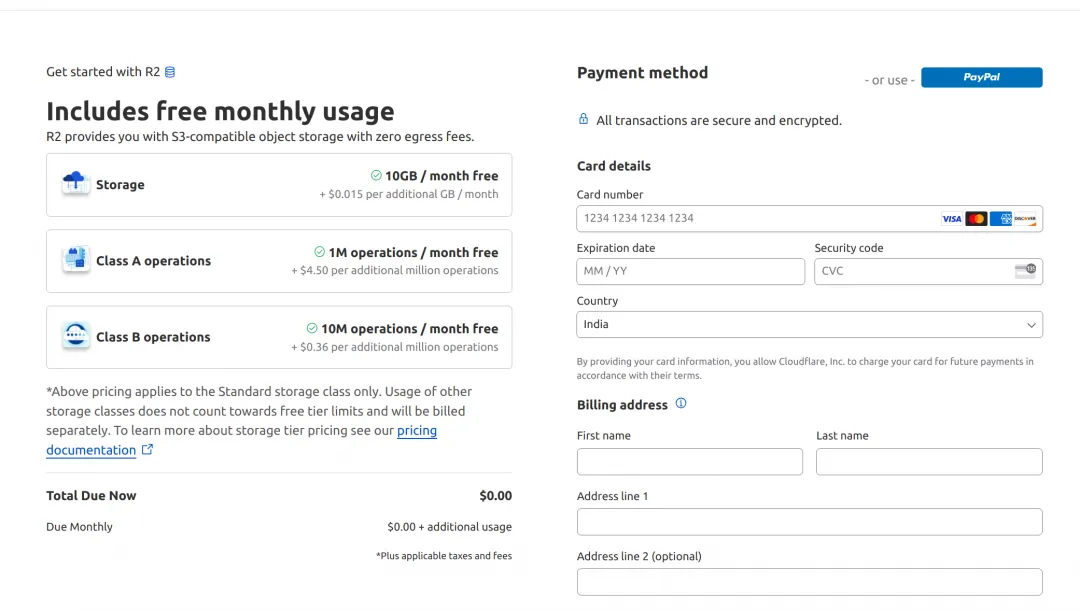
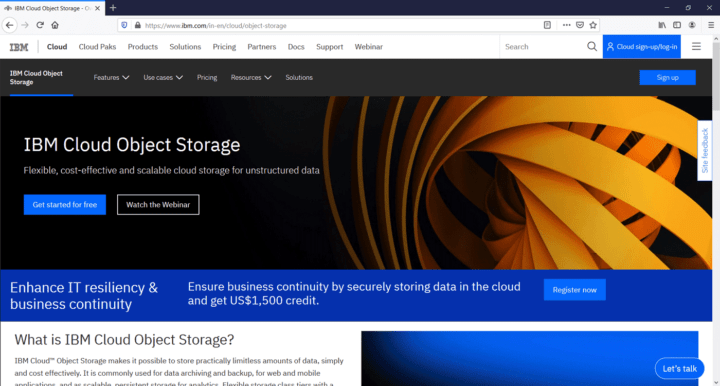

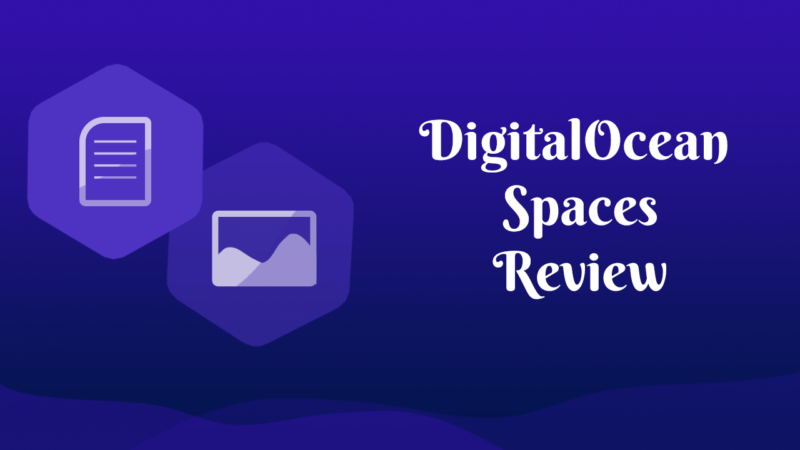
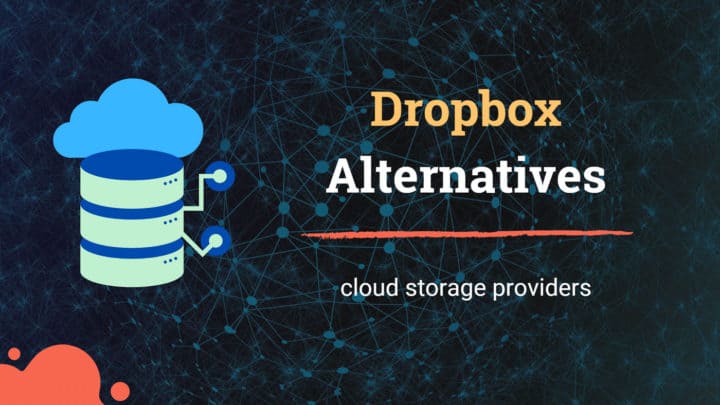
![5 Best Video Hosting Sites [for Businesses & Educators]](https://cdn-2.coralnodes.com/coralnodes/uploads/medium/2021/10/video-hosting-sites-featured-1.jpg)
